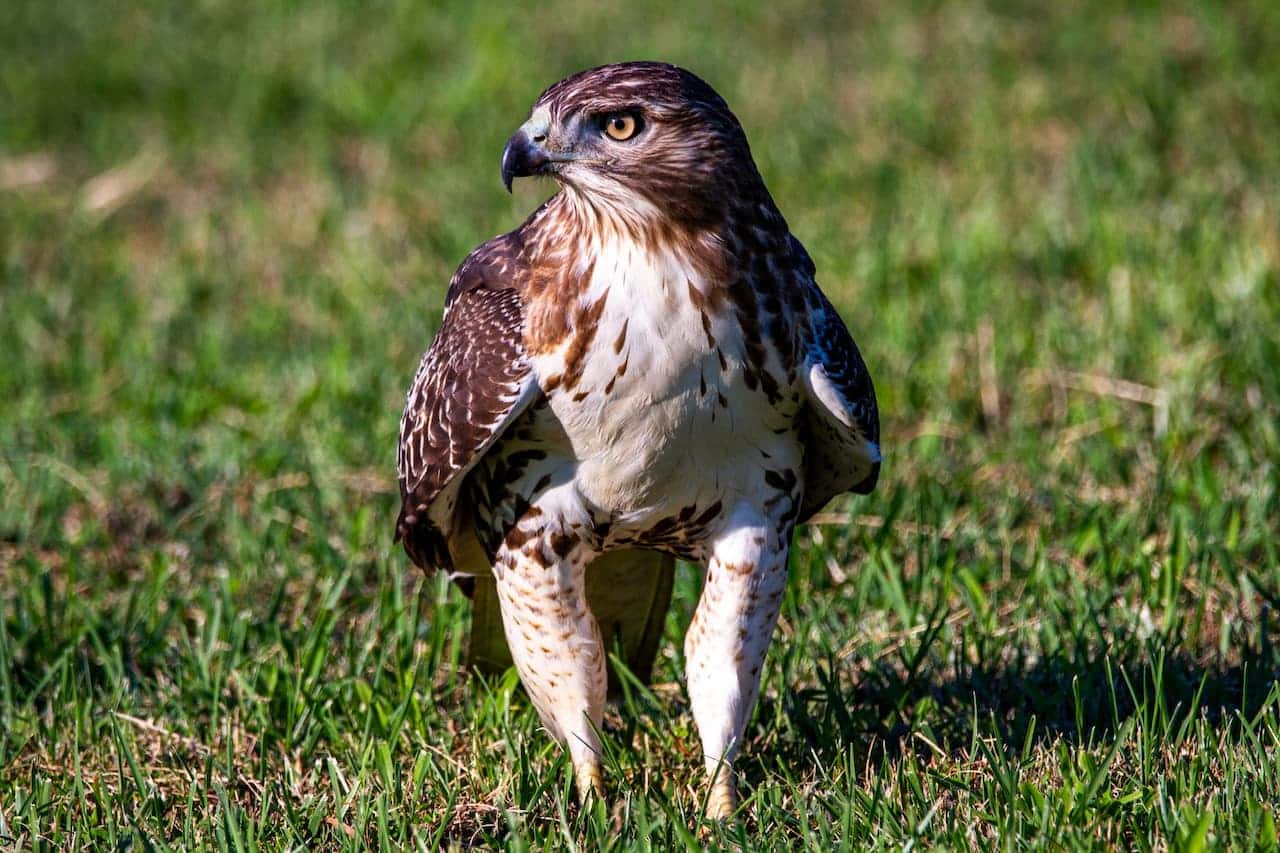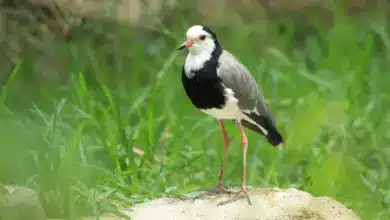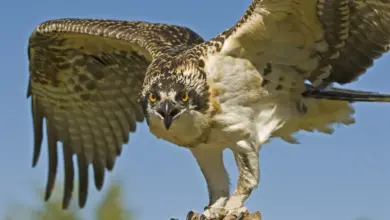The Lammergeiers — a name which originates from German and means “lamb-vulture” or “lamb-hawk” – may suggest that this vulture eats lambs. In fact, this vulture is quite harmless and incapable of killing lambs. Because of this, this misleading name is being phased out and nowadays, this vulture is more commonly referred to as “Bearded Vulture”.
Its orange breast is caused by iron oxides gained from sand-bathing and wall-rubbing. It has been observed that the first born nestling may eat its younger sibling.
The Lammergeiers or Bearded Vulture, Gypaetus barbatus (“Bearded Vulture-Eagle”), is an Old World vulture, the only member of the genus Gypaetus.
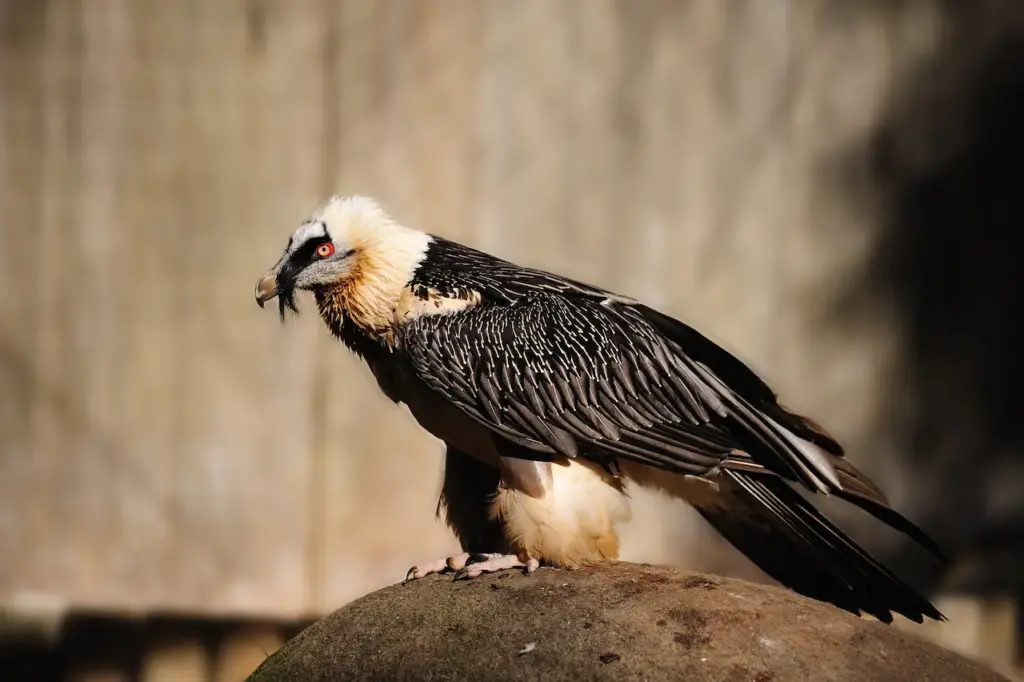
Distribution / Range
It breeds on crags in high mountains in southern Europe, Africa, India and Tibet, laying one or two eggs in mid-winter which hatch at the beginning of spring. The population is resident. The Lammergeier has been successfully re-introduced into the Alps, but is still one of the rarest raptors in Europe.
Like other vultures it is a scavenger, feeding mostly from carcasses of dead animals. It usually disdains the rotting meat, however, and lives on a diet that is 90% bone marrow. It will drop large bones from a height to crack them into smaller pieces. Its old name of Ossifrage (“bone breaker”) relates to this habit. Live tortoises are also dropped in similar fashion to crack them open.
Description
Unlike most vultures, the Lammergeier does not have a bald head. This huge bird is 95-125 cm (37-49 inches) long with a 231-285 cm (91-112 inches) wingspan, and is quite unlike most other vultures in flight due to its large, narrow wings and long, wedge-shaped tail feathers. It weighs between 4.5 and 7.5 kg (10 and 15.5 lbs).
The adult has a buff-yellow body and head, the latter with the black moustaches which give this species its alternative name. It may rub mud over its chin, breast and leg feathers, giving these areas a rust-colored appearance. The tail feathers and wings are grey. The juvenile bird is dark all over, and takes five years to reach full maturity. The Lammergeier is silent, apart from shrill whistles at the breeding crags, and can live up to 40 years in captivity.
Habitat
The habitat is exclusively mountainous terrain (between 500 and 4,000 meters; 1,300 to 13,100 feet). An individual has been seen at 24,000 feet. It breeds from mid December to mid February, laying 1 to 2 eggs, which hatch between 53 and 58 days. After hatching the young spend 106 to 130 days in the nest, before fledging.
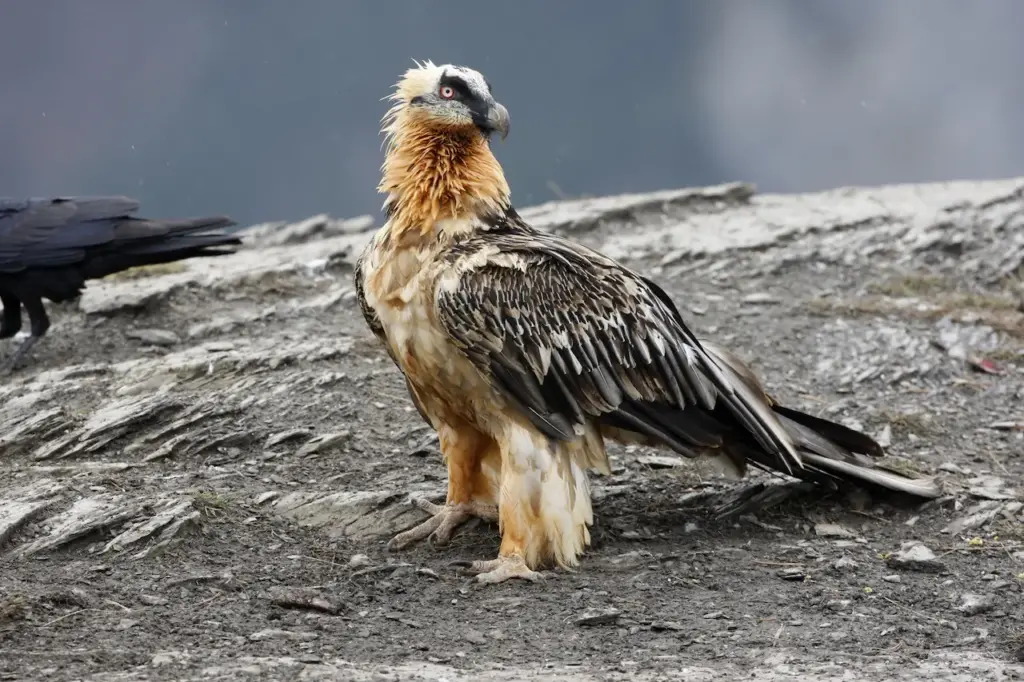
Conservation status
Although the Lammergeier is threatened within its range in Europe, the species has a large range across Asia and Africa and is relatively common across much of that range. As such the species is listed as least concern by the IUCN and BirdLife International, although there is some evidence of decline.
Etymology
This species was first described by Linnaeus in his Systema naturae in 1758 as Vultur barbatus. The name of the Lammergeier originates from German Lämmergeier>, which means “lamb-vulture” or “lamb-hawk”. The name stems from the belief that it attacked lambs.
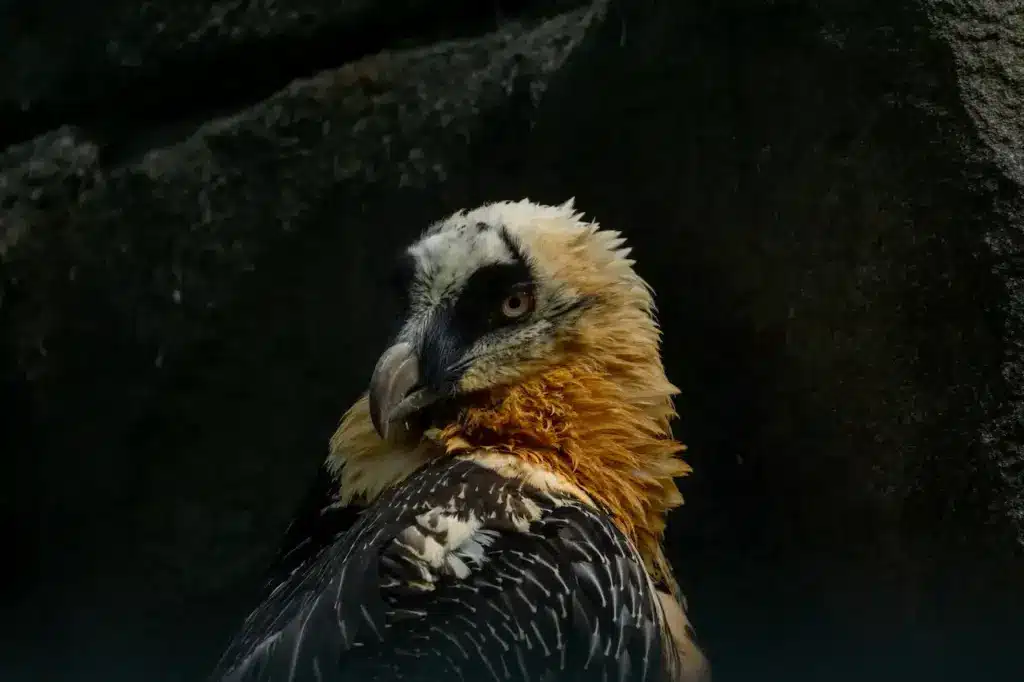
Legend
The Greek playwright Aeschylus was said to have been killed in 456 or 455 BC by a tortoise dropped by an eagle who mistook his bald head for a stone – if this incident did occur, the Lammergeier must be a likely candidate for the “eagle”.
More recently, in 1945, it is said that Shimon Peres (called Shimon Persky at the time) and David Ben-Gurion found a nest of Bearded Vultures in the Negev desert. The bird is called “peres” in Hebrew, and Shimon Persky liked it so much he adopted it as his surname.
Bearded Vulture is considered a threatened species in Iran. Iranian mythology considers the rare Lammergeier the symbol of luck and happiness. It was believed that if the shadow of a huma fell on one, they would rise to sovereignty.
Copyright: Wikipedia. This article is licensed under the GNU Free Documentation License. It uses material from Wikipedia.org …Additional information and photos added by Avianweb.
Please Note: The articles or images on this page are the sole property of the authors or photographers.Please contact them directly with respect to any copyright or licensing questions. Thank you.
The Avianweb strives to maintain accurate and up-to-date information; however, mistakes do happen. If you would like to correct or update any of the information, please send us an e-mail. THANK YOU!

